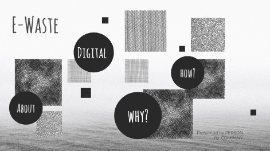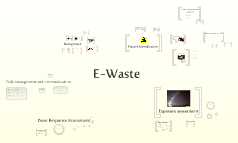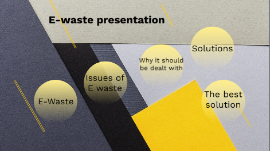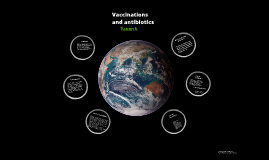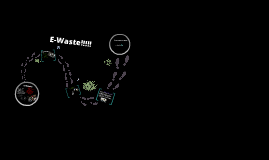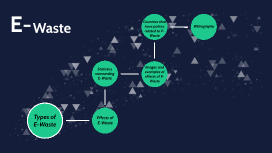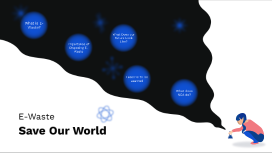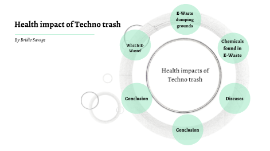E-Waste presentation
Transcript: E- Waste Types of E-Waste Types of E-Waste Major appliances - refrigerators, washing machines, dryers, etc. Small appliances - vacuum cleaners, irons, blenders, fryers, etc. Computer and telecommunication appliances - laptops, PC's, phones, etc. Consumer electronics - video/audio equipment, musical instruments, etc. Lighting devices - incandescent light bulbs, fluorescent tubes, lamps, etc. Electrical and electronic tools - drills, saws, gardening devices, etc. Vending machines What E-Waste includes E-Waste includes: - non ferrous and precious metals - alloys - glass - ceramics - organic polymers with toxic content - and other substances like stabilizers, fillers and pigments. Effects of E-Waste The Negative Effects on Air The Negative Effects on Air The air pollution caused by e-waste impacts some animal species more than others, which may be endangering these species and the biodiversity of certain regions that are chronically polluted. Over time, air pollution can hurt water quality, soil and plant species, creating irreversible damage in ecosystems. The Negative Effects on Soil When large particles are released from burning, shredding or dismantling e-waste, they quickly travel into the ground to the soil. The amount of soil polluted depends on a range of factors including temperature, soil type and soil composition. These can remain in the soil for a long period of time and can be harmful to the soil and plants. Animals and wildlife relying on nature for survival will end up consuming these affected plants, causing internal health problems. The Negative Effects on Soil The Negative Effects on Water After soil contamination, heavy metals from e-waste, such as mercury, lithium, lead and barium, then leak through the earth even further to reach groundwater. When these heavy metals reach groundwater, they eventually make their way into ponds, streams, rivers and lakes which creates toxic water. This is unsafe for animals, plants and communities even if they are far away from a site. The Negative Effects on Water The Negative Effects on Humans The Negative Effects on Humans Electronic waste contains toxic components that are dangerous to human health, such as mercury, lead and lithium. The negative health effects of these toxins on humans include brain, heart, liver and kidney damage. it can also effect the system of the body and how it functions. The growing of e-waste will only worsen if we are not conscious of the effect it causes on our environment. Facts about E-Waste - In 2009, discarded TVs, computers, peripherals (including printers, scanners, fax machines) mice, keyboards, and cell phones totaled about 2.37 million short tons. - E-waste represents 2% of America's trash in landfills, but it equals 70% of overall toxic waste. - 20 to 50 million metric tons of e-waste are disposed worldwide every year. - Cell phones and other electronic items contain high amounts of precious metals like gold or silver. - Only 12.5% of e-waste is currently recycled. Statistics surrounding E-Waste Images and examples showing the everlasting effects of E-Waste Images and examples of effects of E-Waste Countries that have implemented policies to minimize E-Waste? Governments, in countries such as Japan and the Netherlands, have implemented policies that focus on minimizing e-waste. Successful e-waste recycling systems in Japan and Finland pay special attention to small electronic wastes, which is especially relevant to consumers. Countries that have polices related to E-Waste Bibliography and websites https://www.dosomething.org/us/facts/11-facts-about-e-waste https://www.mariuspedersen.cz/en/about-marius-pedersen/services/58.shtml https://info.mayeralloys.com/ewaste-blog/5-shocking-environmental-effects-of-e-waste Bibliography






